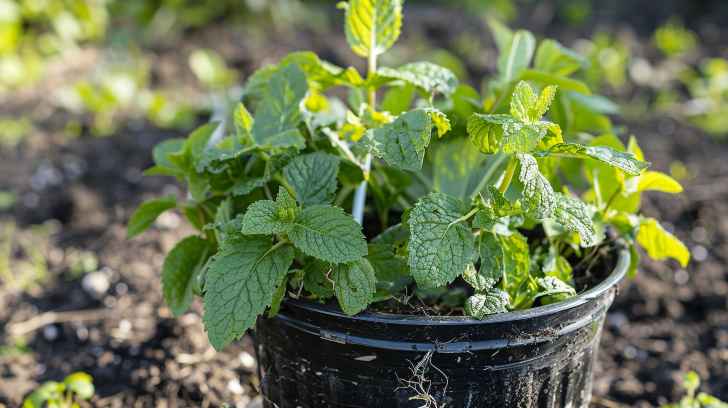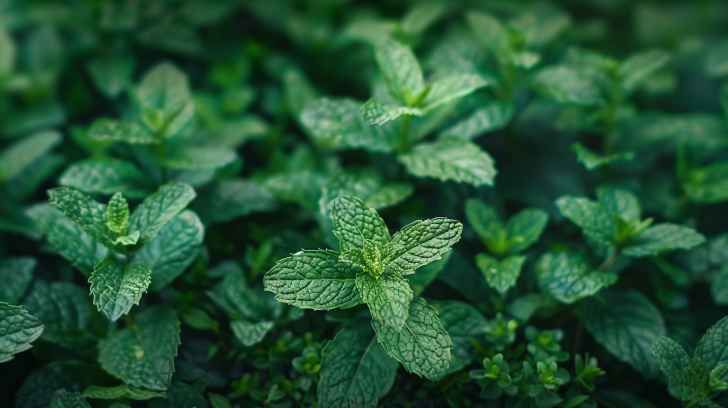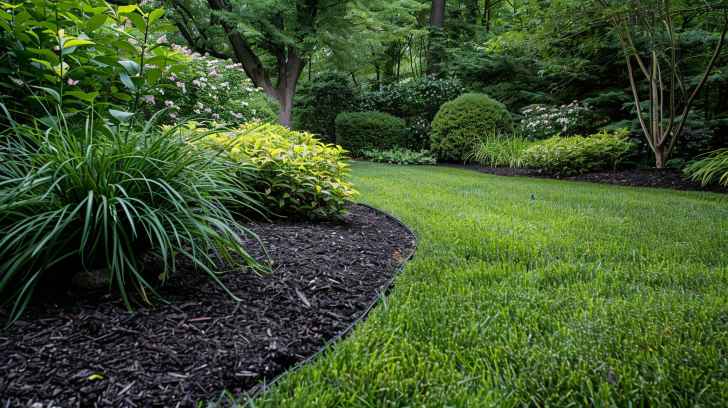In every well-tended garden, there’s a risk hiding among the greenery. Mint, with its sweet smell, can turn into a problem. It grows too much, too fast. This makes it hard for other plants to survive around it in America’s lawns and gardens.
Mint grows quickly because of its strong roots. It takes water and food from other plants, making them die. This is why we need good plans to keep mint under control. Otherwise, it can ruin the beauty of a garden.
Growing mint in the garden can cause trouble. Each new mint plant can become a gardening nightmare. To keep your garden healthy, it’s important to plan well. Picking the right plants helps keep everything in balance. This avoids the damage mint can cause.
Key Takeaways
- Mint’s rapid growth can lead to unintended invasive plants scenarios in home gardens.
- Despite its culinary and medicinal uses, mint requires strict plant containment measures.
- Without diligent planning, aggressive growth can result in significant landscape destruction.
- Mint spreads through rhizomes, which can overtake other plants and reduce biodiversity.
- Understanding and implementing effective garden herbs management techniques is crucial.
The Invasive Nature of Garden Herbs and Mint’s Aggressive Growth
Garden herbs are key in making food taste better and making spaces look good. But some, like mint, can quickly become a problem if not managed well. Knowing about plant propagation, root systems, and sunlight exposure helps understand how these herbs work with their surroundings.
Identifying Invasive Herbs in Your Landscape
Knowing which garden herbs might spread too much is important for garden planning. Keeping an eye on how they grow and what they need like moisture and soil stops them from taking over.

Understanding Mint’s Root Systems and Propagation
Mint grows fast because of its rhizomes. These are roots that spread out underground. To manage it, you need to check often and understand how it spreads.
Plant Selection: Balancing Beauty and Control
To have a garden that’s both nice to look at and easy to care for, you need a good plan. This means picking the right plants and thinking about where to put them. Using barriers helps keep everything in check, especially with plants like mint that like to spread.
By doing these things, you can keep your garden diverse and healthy. You’ll also prevent plants like mint from spreading too much.
Mint: The Culprit of Landscape Destruction
Mint is known for its great taste. But unfortunately, it’s also one of the most invasive plants in gardens. Its aggressive growth can take over local plants. This makes mint a big problem for keeping a garden healthy. Without the right care, mint can harm the ecosystem balance. It reduces biodiversity and makes gardens look all the same.
To keep a garden diverse and healthy, it’s important to control mint. Knowing how it can harm local plants is the first step. Gardeners need to watch and limit mint’s spread carefully. This helps fight plant competition and keeps the garden varied.
- Check garden edges for mint taking over.
- Use root barriers to stop its spread underground.
- Cut mint often to control its growth.
Dealing with mint’s problems means being careful about how we garden. With smart methods, we can enjoy mint’s smell and taste. And we don’t have to sacrifice our garden’s health or looks.
Effective Strategies for Controlling and Preventing Invasive Plants
Fighting the spread of invasive plants like mint needs clear and effective plans. These plans help gardens look better and stay ecologically balanced. Gardeners can use a mix of methods. They include keeping plants in check, cutting-edge weed control, and smart companion planting.
Implementing Physical Barriers for Plant Containment
Using physical barriers is a smart way to stop invasive plants from spreading. Gardeners can use pots, raised beds, or deep trenches to keep aggressive roots in place. This method makes it easier to manage your garden. It simplifies things like pruning and picking fruits or vegetables.
Weed Control Techniques: Beyond the Basics
Advanced weed control includes more than just pulling out the weeds. Covering the soil with eco-friendly mulch helps stop weeds. It also feeds the soil. Also, using specific herbicides carefully can fight off weeds long-term. This helps the plants you want to grow do better.
Choosing Companion Plants to Suppress Aggressive Species
Companion planting is a clever natural method to stop weeds. You plant certain plants close to the valuable ones. Some plants, like lavender or rosemary, can stop weeds. They also make the garden healthier without needing chemicals.

| Companion Plant | Benefits | Suppresses Weed Type |
|---|---|---|
| Lavender | Repels deer, attracts pollinators | Grass weeds |
| Rosemary | Deters bean beetles, enhances flavor of nearby herbs | Broadleaf weeds |
| Marigolds | Nematode control, repels pests | Grass and broadleaf weeds |
Conclusion
Mint in the garden is both lovely and challenging. Its smell can make our food and health better. But, we must be careful. Without the right choices and control, mint can take over our yards. This can mess with the balance of our outdoor spaces.
We need to handle invasive plants like mint with care. This means really good garden upkeep. You must do your homework and then take action. Use strong barriers or pick other plants that can live with mint. This helps keep everything in harmony.
Choosing and looking after garden plants wisely stops mint from spreading wildly. It also makes the garden stronger. With smart choices and regular care, mint can be a joy, not a problem. This way, your garden stays beautiful and balanced for a long time.
FAQ
How can garden herbs like mint become invasive?
Mint spreads quickly because of its strong roots. It grows fast and can crowd out other plants in your garden.
What are some signs that a herb is invasive in my landscape?
Invasive herbs like mint spread fast and cover a lot of ground. They are hard to control and push out other plants.
How does mint’s root system contribute to its invasive nature?
Mint has rhizomes, which are underground stems. They grow sideways and sprout new plants. This makes mint spread fast and wide.
What should be considered when selecting plants to avoid invasive ones?
Choose plants carefully by looking at how they grow and spread. Pick ones that don’t take over and fit well with your garden’s ecosystem.
How can mint’s invasive properties impact biodiversity?
Mint competes with native plants for light, water, and nutrients. Its dominance can harm local plants and wildlife habitats.
What are some strategies for controlling invasive mint growth?
Plant mint in containers or beds with barriers. Prune it often. Use companion planting to control its spread.
Can weed control techniques help manage mint in the garden?
Yes. Using mulch and removing sprouts can help control mint. Combine these with barriers for the best results.
What are the benefits of companion planting with aggressive herbs like mint?
Companion planting can limit mint’s spread. It helps other plants grow and offers natural pest control. It makes the garden environment less inviting for mint.






